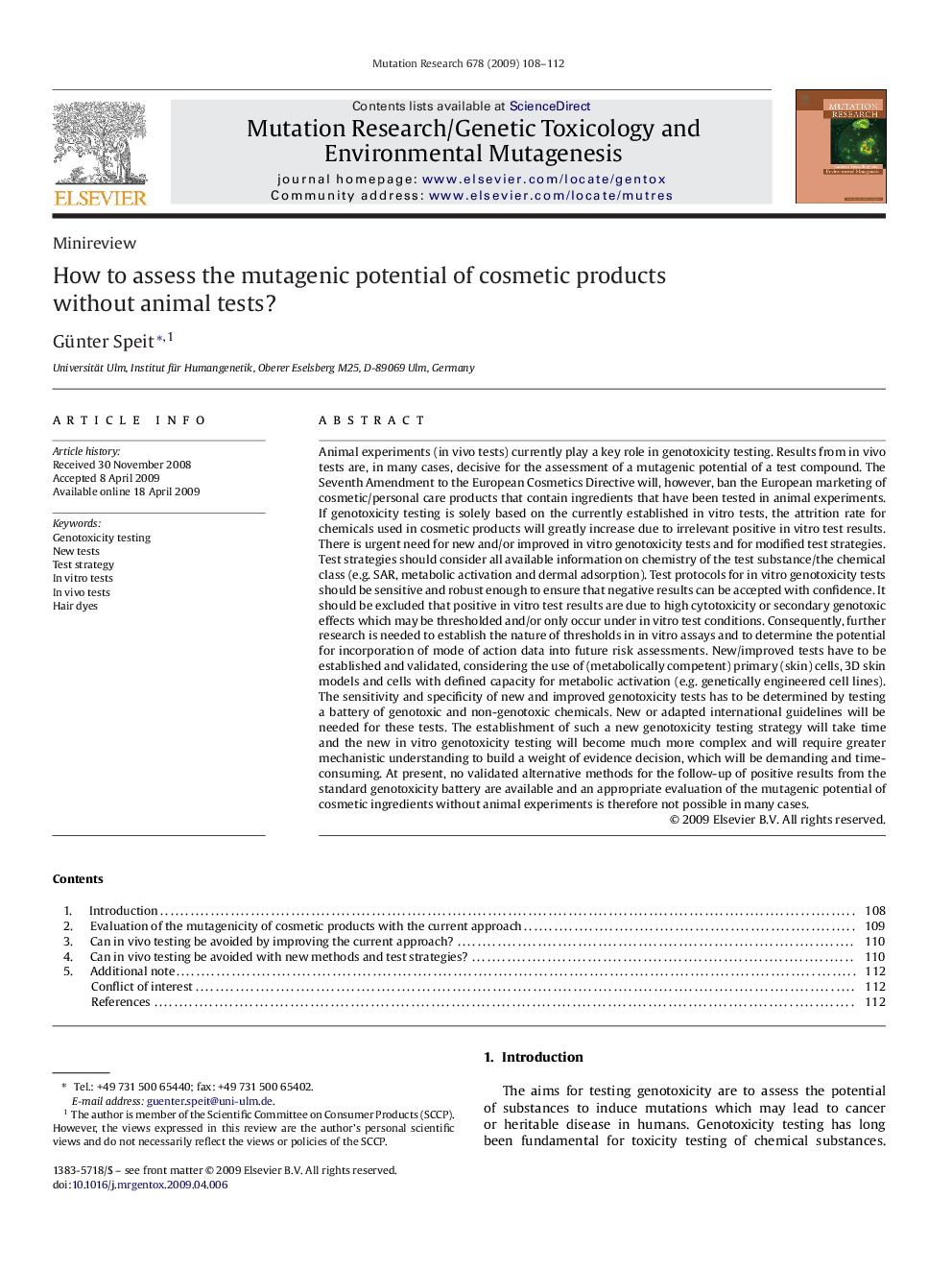| کد مقاله | کد نشریه | سال انتشار | مقاله انگلیسی | نسخه تمام متن |
|---|---|---|---|---|
| 2148662 | 1089575 | 2009 | 5 صفحه PDF | دانلود رایگان |

Animal experiments (in vivo tests) currently play a key role in genotoxicity testing. Results from in vivo tests are, in many cases, decisive for the assessment of a mutagenic potential of a test compound. The Seventh Amendment to the European Cosmetics Directive will, however, ban the European marketing of cosmetic/personal care products that contain ingredients that have been tested in animal experiments. If genotoxicity testing is solely based on the currently established in vitro tests, the attrition rate for chemicals used in cosmetic products will greatly increase due to irrelevant positive in vitro test results. There is urgent need for new and/or improved in vitro genotoxicity tests and for modified test strategies. Test strategies should consider all available information on chemistry of the test substance/the chemical class (e.g. SAR, metabolic activation and dermal adsorption). Test protocols for in vitro genotoxicity tests should be sensitive and robust enough to ensure that negative results can be accepted with confidence. It should be excluded that positive in vitro test results are due to high cytotoxicity or secondary genotoxic effects which may be thresholded and/or only occur under in vitro test conditions. Consequently, further research is needed to establish the nature of thresholds in in vitro assays and to determine the potential for incorporation of mode of action data into future risk assessments. New/improved tests have to be established and validated, considering the use of (metabolically competent) primary (skin) cells, 3D skin models and cells with defined capacity for metabolic activation (e.g. genetically engineered cell lines). The sensitivity and specificity of new and improved genotoxicity tests has to be determined by testing a battery of genotoxic and non-genotoxic chemicals. New or adapted international guidelines will be needed for these tests. The establishment of such a new genotoxicity testing strategy will take time and the new in vitro genotoxicity testing will become much more complex and will require greater mechanistic understanding to build a weight of evidence decision, which will be demanding and time-consuming. At present, no validated alternative methods for the follow-up of positive results from the standard genotoxicity battery are available and an appropriate evaluation of the mutagenic potential of cosmetic ingredients without animal experiments is therefore not possible in many cases.
Journal: Mutation Research/Genetic Toxicology and Environmental Mutagenesis - Volume 678, Issue 2, 2 August 2009, Pages 108–112